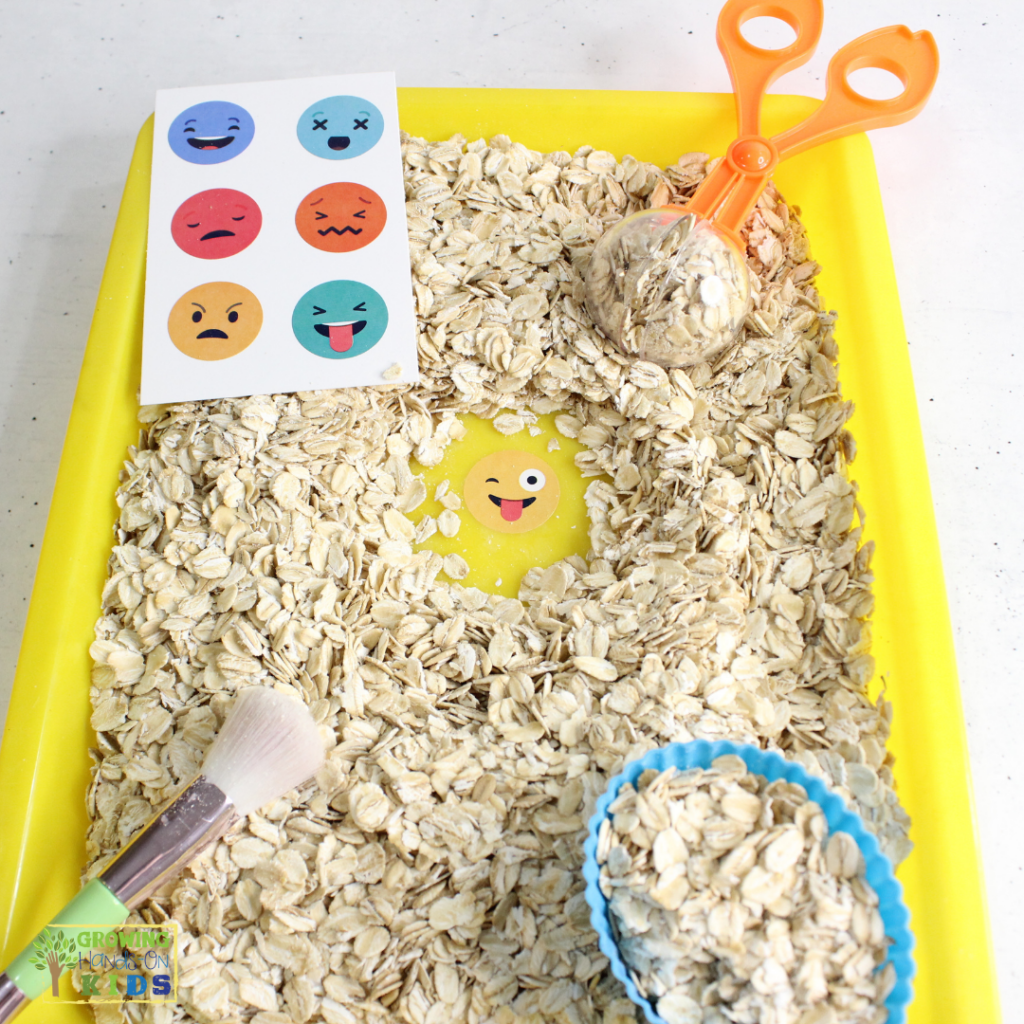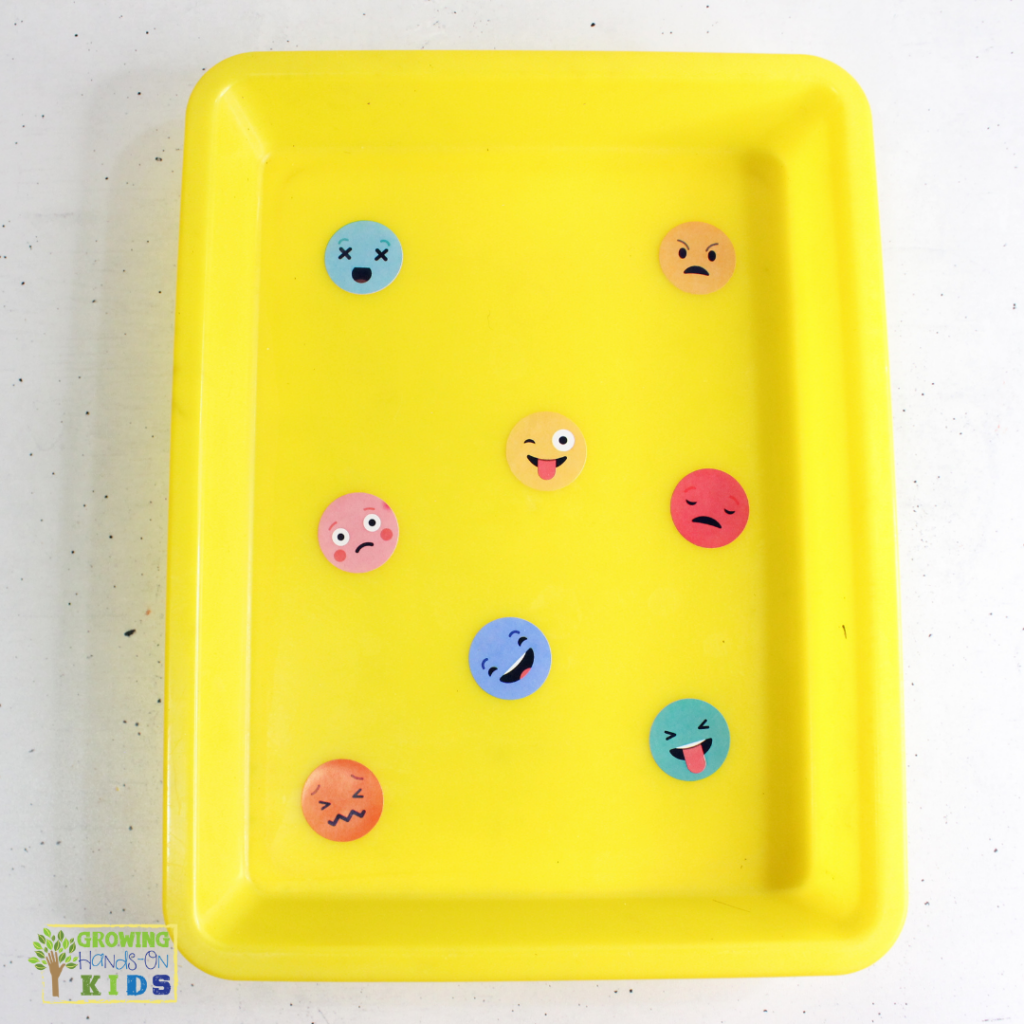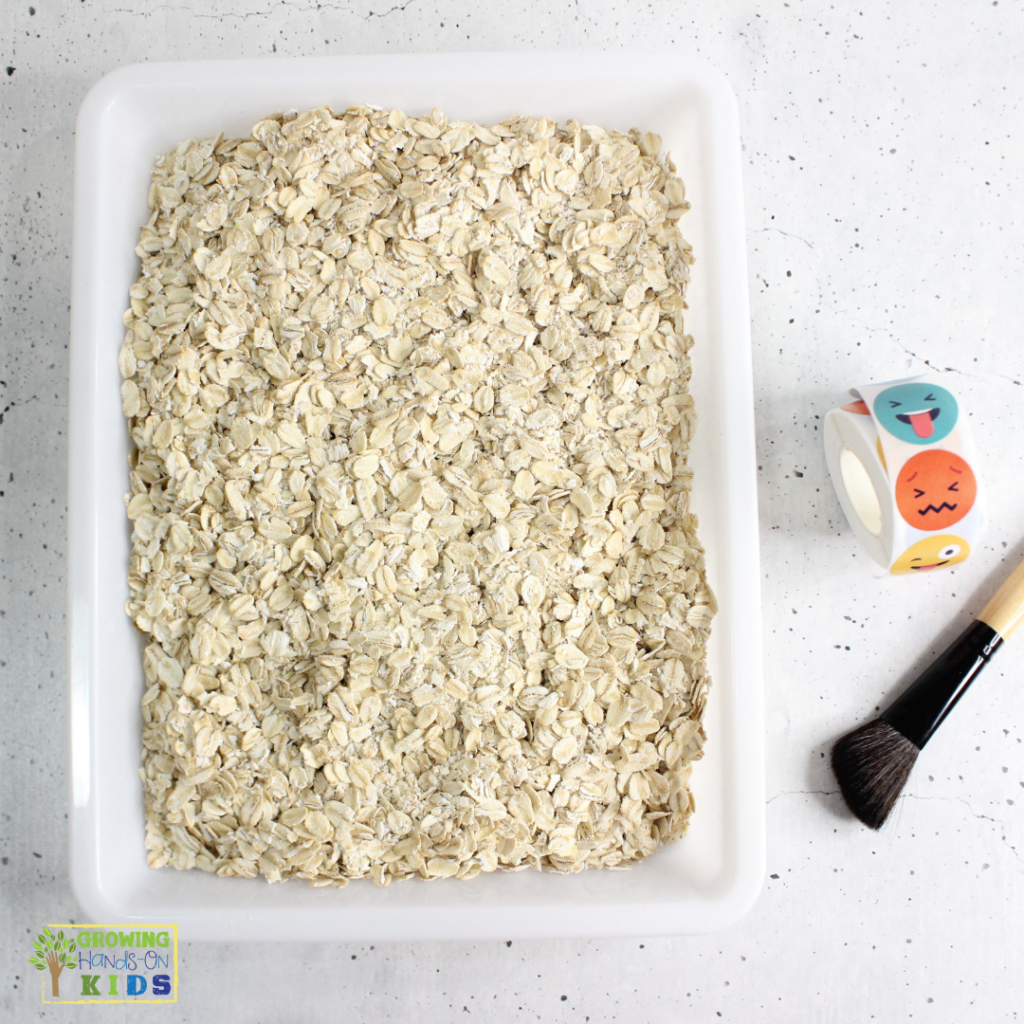How to Create an Emotions Sensory Bin
Affiliate and Referral links are used below to promote products I love and recommend. I receive a commission on any purchases made through these links. Please see my disclosure policy for more details. As an Amazon Associate, I earn from qualifying purchases.
Sensory play is a valuable tool in every child’s development, and when paired with emotional learning, it becomes an engaging way to learn about emotions. This simple oat sensory bin setup is easy to recreate at home with minimal supplies. And if you would rather not use a food base, you can use play sand.
Supplies to Make an Emotions Sensory Bin
This sensory bin can be made with things you already have at home. If you don't want to purchase sensory face stickers, you can draw different emotional faces on paper.
Materials to Gather or Purchase
- Sensory bin
- Emotion stickers
- Sensory tools (tongs, tweezers, bubble tongs, scoops, spoons etc)
- Makeup brush
- Oats (play sand for a non-food option)
Instructions to Create the Emotions Sensory Bin
- Put the stickers on the bottom of your sensory bin. Vary the emotion stickers on the bottom of each tray or bin.
- Cover with oats or sand.
- Add any sensory tools and the makeup brush and have your kids explore and search for each emotion.
Ways to Use the Emotions Sensory Bin
- Talk About Feelings: While your child plays with the oats and searches for the emotion stickers, use the stickers as a conversation starter. Ask them to describe each emotion and how they feel when they experience it. For example, “Can you show me a time when you felt like the happy face?” or “What makes you feel surprised like this emoji?”
- Match Emotions to Actions: Encourage your child to match their actions in the sensory bin to different emotions. “What would it look like if we excitedly scoop the oats?” or “How would we scoop if we were feeling angry?”
- Storytelling: You can also use the emotion stickers as a prompt for storytelling. Ask your child to create a short story based on the different emotions on the card while playing. This will help them express their emotions and boost their imagination.
Benefits of Emotional Learning with Sensory Play
I went in-depth on why sensory play is important here, but here are some quick reasons why:
- Emotional Intelligence: Recognizing and naming emotions is a key part of developing emotional intelligence and helps children manage their feelings while feeling empathy for others.
- Self-Regulation: When children begin to recognize their emotions, they can also learn how to regulate them. They’ll be able to associate sensory play with positive coping mechanisms, which can help them manage big feelings like frustration or sadness.
- Improved Communication: Talking about emotions during play gives children the tools to communicate their feelings more clearly, leading to better relationships as they grow.
How to Create an Emotions Sensory Bin
Equipment
- 1 Sensory bin
- 1 Emotion stickers
- 1 Sensory tools (tongs, tweezers, bubble tongs, scoops, spoons etc)
- 1 Makeup brush
- Oats Use play sand as a non-food option
Instructions
- Put the stickers on the bottom of your sensory bin. Vary the emotion stickers on the bottom of each tray or bin.
- Cover with oats or sand.
- Add any sensory tools and the makeup brush and have your kids explore and search for each emotion.
These Emotions Cards (digital download/PDF) come with 12 common emotions that help describe and explain each emotion for your child.
The front includes the emotion along with a graphic that gives a visual representation of each emotion. The back of each card includes other words to describe that emotion and tips for caregivers and educators on emotion education.
You May Also Like:

Heather Greutman, COTA
Heather Greutman is a Certified Occupational Therapy Assistant with experience in school-based OT services for preschool through high school. She uses her background to share child development tips, tools, and strategies for parents, educators, and therapists. She is the author of many ebooks including The Basics of Fine Motor Skills, and Basics of Pre-Writing Skills, and co-author of Sensory Processing Explained: A Handbook for Parents and Educators.








